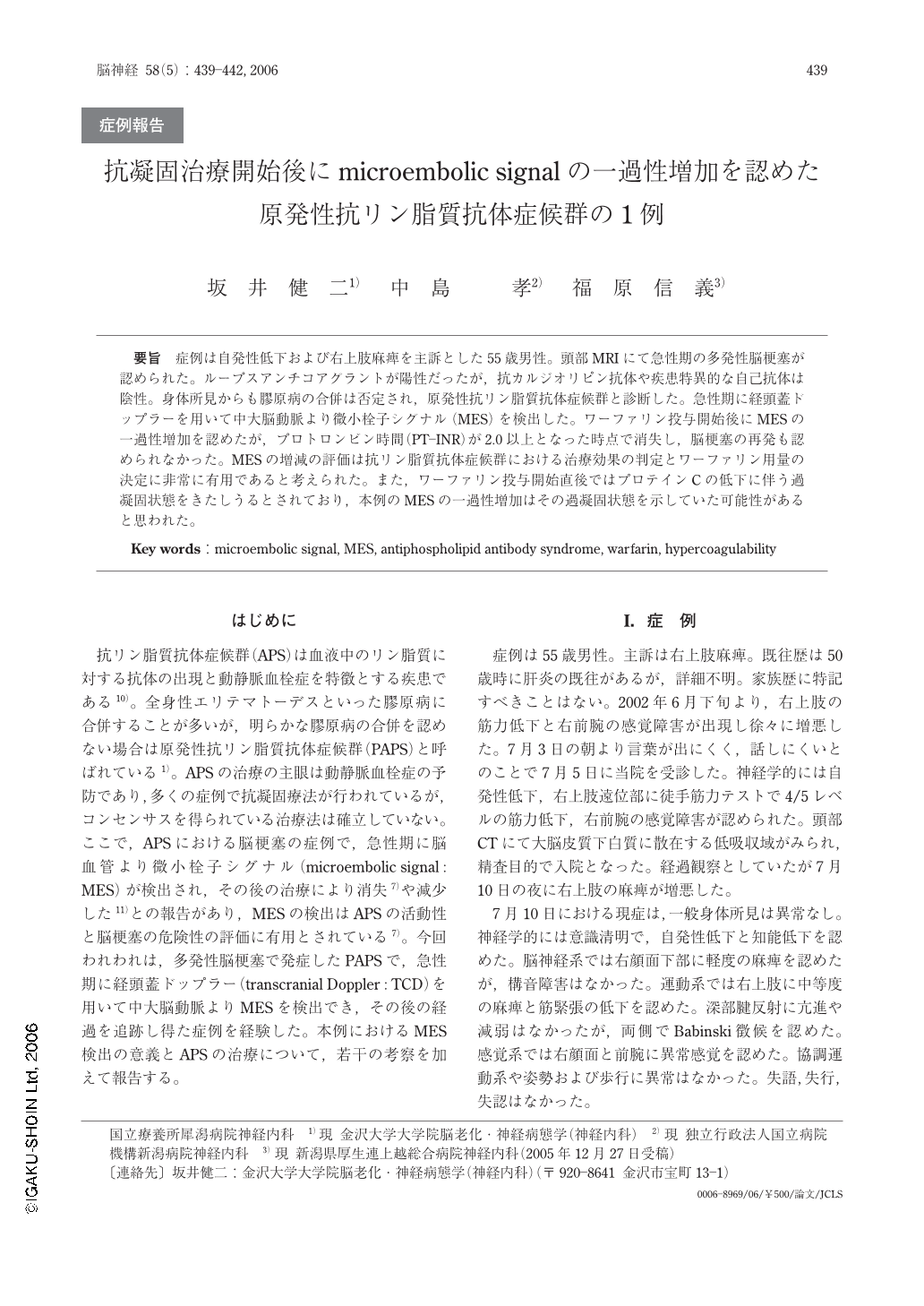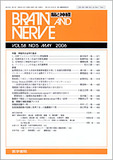Japanese
English
- 有料閲覧
- Abstract 文献概要
- 1ページ目 Look Inside
- 参考文献 Reference
要旨 症例は自発性低下および右上肢麻痺を主訴とした55歳男性。頭部MRIにて急性期の多発性脳梗塞が認められた。ループスアンチコアグラントが陽性だったが,抗カルジオリピン抗体や疾患特異的な自己抗体は陰性。身体所見からも膠原病の合併は否定され,原発性抗リン脂質抗体症候群と診断した。急性期に経頭蓋ドップラーを用いて中大脳動脈より微小栓子シグナル (MES) を検出した。ワーファリン投与開始後にMESの一過性増加を認めたが,プロトロンビン時間(PT-INR)が2.0以上となった時点で消失し,脳梗塞の再発も認められなかった。MESの増減の評価は抗リン脂質抗体症候群における治療効果の判定とワーファリン用量の決定に非常に有用であると考えられた。また,ワーファリン投与開始直後ではプロテインCの低下に伴う過凝固状態をきたしうるとされており,本例のMESの一過性増加はその過凝固状態を示していた可能性があると思われた。
We report a 55-year-old man complaining of monoparesis of the right arm and dementia. Brain magnetic resonance imaging(MRI)demonstrated multiple foci of fresh cerebral embolism. The serum lupus anticoagulant was positive, however, the serum anticardiolipin antibody and other autoantibodies indicating connective tissue diseases were negative. This patient received a diagnosis of primary antiphospholipid antibody syndrome. Transcranial Doppler(TCD)monitoring of the middle cerebral artery showed the presence of microembolic signal(MES). We initiated anticoagulant therapy with intravenous heparin administration, and three days later we added oral warfarin administration. We used both warfarin and heparin together for only three days. The number of MES increased transiently after initiating of warfarin administration, then decreased by warfarin therapy with production of an international normalized ratio(INR)of prothrombin time over 2. His neurological symptoms normalized except for monoparesis of the right arm. There were no foci of fresh cerebral infarct disclosed on brain MRI performed two months after admission.
The treatment strategy for antiphospholipid antibody(APS)patients has not yet been established. Some reports and guideline recommended that the stroke patients with APS should be treated with long-term oral anticoagulant therapy, target INR 2.5(optimal range 2.0 to 3.0). In this patient, we confirmed a decrease in the number of MES by warfarin therapy with production of INR over 2. In APS patients, detection of MES by TCD is a useful device for adjustment of the warfarin dose.
Concerning the course of MES and warfarin therapy, transient elevation of the number of MES after initiation of warfarin therapy would suggest the hypercoagulability due to an acute decrease in serum protein C level. Using the TCD technique, we detected such hypercoagulability for the first time.

Copyright © 2006, Igaku-Shoin Ltd. All rights reserved.


